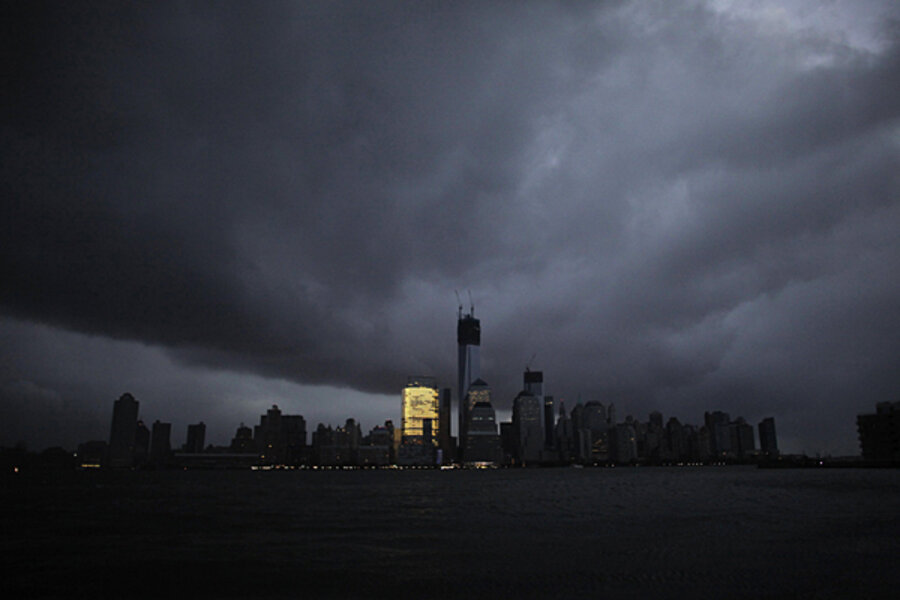Can renewables prevent future blackouts from storms?
Loading...
In the wake of the millions of homes and businesses left powerless by hurricane Sandy, many homeowners must be asking: Is there a better way to get my electricity?
One possibility, of course, is using renewable energy. It sounds easy: Stick up a few solar panels and, voila, you're covered. Can solar or other renewables really offer a solution to storm-related blackouts?
“Potentially yes, but it’s not a slam dunk,” says Stephen Connors, a renewable energy researcher at the MIT Energy Initiative, a multidisciplinary effort at the Massachusetts Institute of Technology in Cambridge, Mass.
When it comes to outages, the crucial question is not necessarily what kind of power you use, but what it is connected to, Mr. Connors says. You can have a rooftop full of solar panels but if it’s integrated into a city-wide grid system, with no on-site storage capabilities, you are still reliant on a network vulnerable to falling branches and blown transformers.
"Everything comes down to whether you connect to the grid and whether you can island from the grid," Michael Stadler, research scientist at Lawrence Berkeley National Laboratory in Berkeley, Calif., says in a telephone interview.
When a grid is disrupted, most residents or commercial businesses with solar panels will still lose power like those without because the panels still rely on the grid to generate grid-synchronized energy. If the solar panel owners have an on-site battery system, with a switch that allows a disconnection from the utility, they can run off whatever energy they have stored, according to energy experts.
This, however, is very uncommon, energy experts say. In rare cases, like hospitals and jails, a section of the grid may completely "island" itself from the rest of the grid and stay continuously powered indefinitely.
This kind of decentralization is sometimes referred to as a “microgrid.” If you think of our traditional energy grid as a wheel with spokes – electricity radiating out from a central power plant – then a microgrid looks more like a mesh or interconnected web. If one connection breaks, the power can be rerouted through other channels.
“In a radial system everyone lives on a dead-end street,” says Mr. Connors. “On a web system you can drive through the back gate.”
During the blackouts that occurred after Japan's 2011 earthquake and tsunami, one community reaped benefits from this alternative grid system. The Sendai Microgrid at Tohoku Fukushi University maintained an island of continuous power supply through its distributed generators and batteries. A hospital, nursing care facilities, and a data center all maintained electricity and heat, despite the lengthy power outages in surrounding areas.
The microgrid is a storm-resistant system and a core component of the concept of a smart grid, which advocates say is the future of energy distribution.
The total worldwide capacity of microgrids will more than quintuple over the next six years, according to a study published this month by Pike Research, a clean-technology market research firm based in Boulder, Colo.
It reflects a core theme of the digital age: decentralization. If more disasters on par with hurricane Sandy pop up, the move to microgrids could be accelerated.





